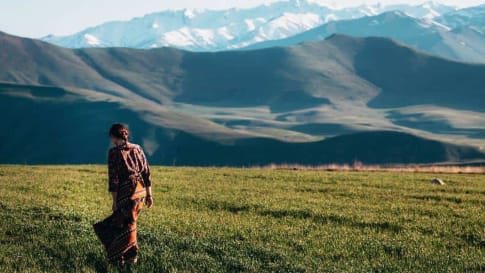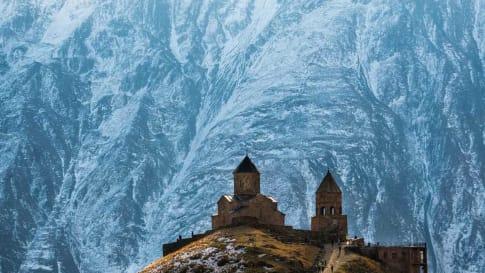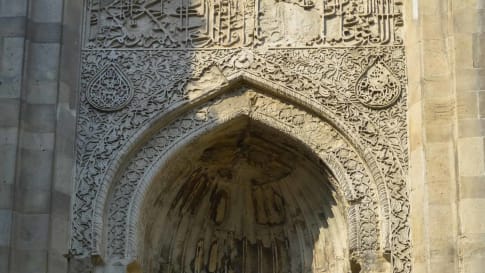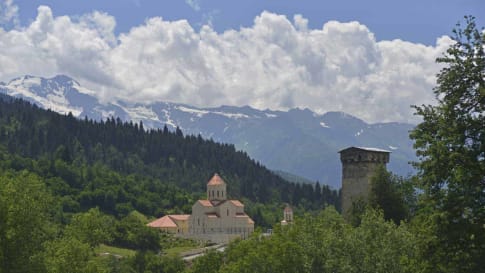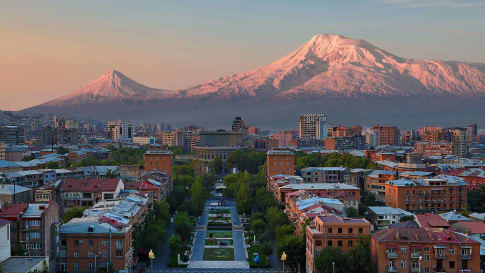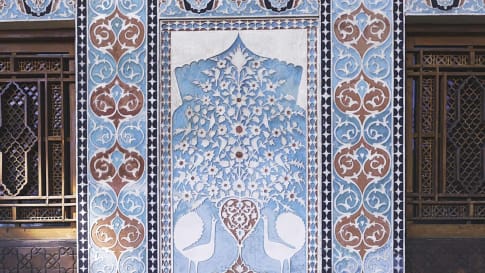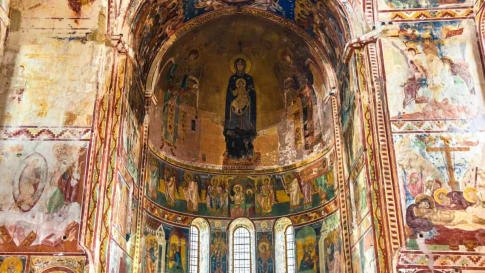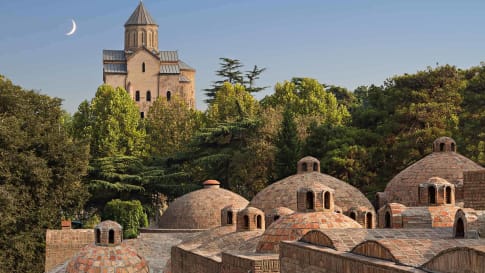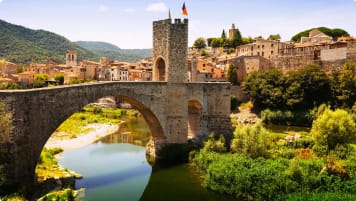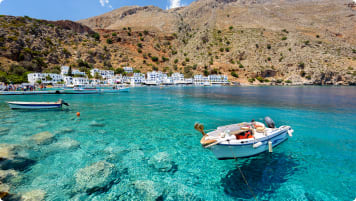Small Group Tour to the Caucasus | Armenia Azerbaijan Georgia
This small group program is designed to give people an opportunity to explore Tbilisi, Baku, Yerevan as well as important monuments, historical and religious sites, diverse landscapes and ancient architecture by visiting the Caucasus Mountains and the lowlands of Armenia, Georgia and Azerbaijan. Led by local English speaking guides, there will be the opportunity to meet local people.
From $11,268CAD
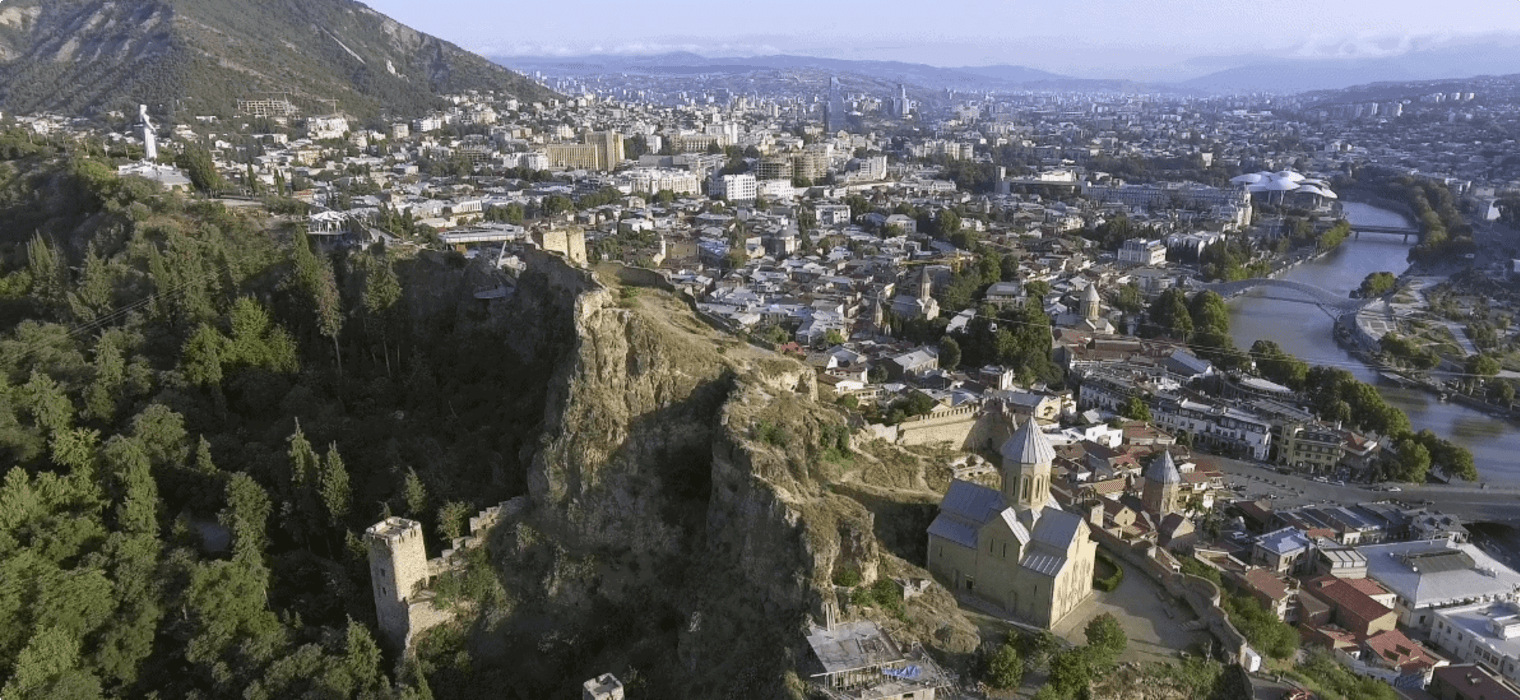
Highlights
- 1. Sample the national cuisines and music at a special farewell dinner held in each country.
- 2. Trace the "Wine Route" of Kakheti, a rich wine-growing region with magnificent vineyards and quaint villages.
- 3. Discover the ancient Colchis Kingdom in Kutasi, destination for the legendary Jason and the Argonauts.
- 4. Experience diverse cultures and the landscapes between the Black Sea coast of Georgia and the Caspian coast of Azerbaijan.
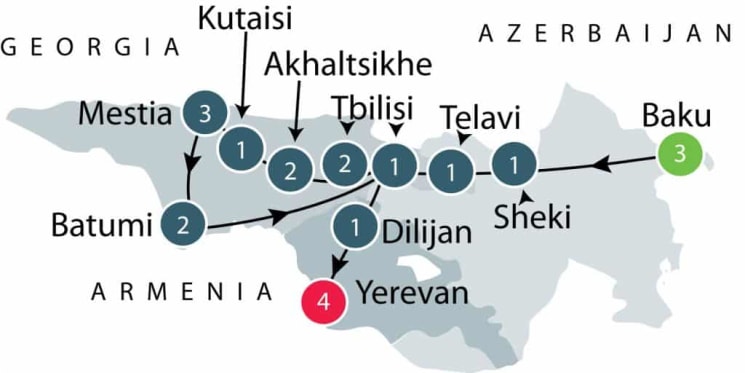
Departure Dates
| Departure Date | Price |
|---|---|
| 16 May 2025 Ends 06 June 2025 • 22 days $11,268 Twin $12,402 Single Pre-guaranteed | Selected |
| 06 October 2025 Ends 27 October 2025 • 22 days $11,268 Twin $12,402 Single Available | |
| 15 May 2026 Ends 05 June 2026 • 22 days $11,268 Twin $12,402 Single Available | |
| 05 October 2026 Ends 26 October 2026 • 22 days $11,268 Twin $12,402 Single Available |
Armenia, Azerbaijan, Georgia small group tour | Odyssey Traveller
Odyssey offers easy, convenient, and relaxed escorted small group tours across the Caucasus and beyond. We explore Georgia's fairy-tale natural beauty, its ancient, and Imperial heritage in Armenia, its World Heritage Sites, and famous cities, all with some truly spectacular scenery along the way. This and more is all waiting to be explored on one of Odyssey’s small group tours of the Caucasus, designed for the senior traveller, and led by experienced, and enthusiastic like minded people.
This 22-day small group tour to Armenia , Azerbaijan , and Georgia gives travellers an opportunity to explore Tbilisi , Baku , and Yerevan. To be seen on these escorted small group tours the Caucasus (Georgia, Armenia, Azerbaijan) encompasses important monuments, historical and religious sites, diverse landscapes, and ancient architecture. We travel through the spectacular Caucasus Mountains and the lowlands of Armenia , Georgia, and Azerbaijan . On small group tours the Caucasus are fully escorted by an Odyssey Program Leader and led by a local guide in each city tour the group enjoys. Over the course of these Georgia Armenia Azerbaijan Tours we have the opportunity to meet locals and observe their lifestyles in both the cities and remote sections of the Caucasus visiting places of historical significance on the UNESCO World Heritage list . From Cosmopolitan Baku to the break at a caravanserai in the Kakheti region the experience and stories will remain with you you after a Georgia Armenia Azerbaijan group tours.
Visiting the Caucasus Region
Visiting Armenia, Azerbaijan, and Georgia in one trip makes logistical sense as the countries sit next to each other south of the Caucasus Mountains, but their deep, historical connections also make it imperative for travellers to visit all three to get a clearer picture of the region.
Armenia, Azerbaijan, and Georgia are often referred to as ‘the Caucasus region’. The Caucasus, or Caucasia, refers to both the mountain system and the region bounded by the Black Sea in the west and the Caspian Sea in the east. This mountain system includes the Greater Caucasus mountain range in the north – which serves as a natural barrier between Eastern Europe and Western Asia and includes Europe’s highest mountain, Mount Elbrus (height 5,642 metres or 18,510 ft) – and the Lesser Caucasus in the south.
The name Caucasus comes from Kaukasos, which was what the Ancient Greeks used to refer to the mountains. For centuries throughout history, the Caucasus was associated with the myth of Prometheus. In Greek mythology, Prometheus was punished for stealing fire from the gods by being chained to the icy peaks of the Greater Caucasus chain. The land north of the Greater Caucasus (Ciscaucasia) is in Russian territory, while the south (South Caucasus or Transcaucasia) is occupied by the former Soviet territories and now independent republics of Armenia, Azerbaijan, and Georgia. It is this region, south of the mountain barrier, that we will examine.
Armenia, Azerbaijan, and Georgia have a long history. In fact, in 2009, a team of researchers and experts from the United States, Israel, and the Republic of Georgia examined clay retrieved from the Dzudzuana Cave, 200 km from the capital of Tbilisi, and found flax fibres, invisible now to the naked eye due to disintegration, that were more than 34,000 years old (Upper Paleolithic Age). Flax is a plant with edible grain and is still used to make linen, though the variety used in modern times—Linum usitatissimum—is domesticated, unlike the wild variety used by our ancestors. The fibres found in this cave showed that humans had been industriously creating fibres from plants for clothing for much longer than experts had realised.
Some parts of this long history overlap as their borders were redrawn after every war or invasive siege, each country growing bigger, smaller, or encroaching on another’s territory. The prime geographical location, mild climate, and fertile lands of the South Caucasus led to invasions from every major power in the world throughout the centuries. The Greeks, Persians, Romans, Byzantines, Mongols, Ottomans, and the former Soviet Union have all left their mark in the region. The Ancient Kingdom of Colchis covered what is now western Georgia and dates from the Bronze Age. The Greeks established colonies in Colchis between the 8th and 6th centuries BC. The wealthy kingdom figures prominently in Greek mythology, said to be the home of Princess Medea, the site of war god Ares’s sacred grove, the land of the Amazons, and the destination of Jason and the Argonauts. You can read more about their entwined histories in our article.
Armenia Azerbaijan Georgia Tour Itinerary
Azerbaijan
Azerbaijan champions secularism and a separation of state and religion. It is a country that perhaps travellers do not think to include on their list of places to visit, but Azerbaijan puts itself decidedly on the map. Baku is the capital, the centre of the city sitting on the shore of the Caspian Sea. Its skyline is dominated by the Flame Towers, a trio of skyscrapers that serve as the symbol of the city.‘Azer’ in Persian means fire and the country’s nickname is ‘the Land of Fire’. Zoroastrianism, the main religion during Persian rule, puts great importance on fire, which is believed to be a source of knowledge. We now know that the country’s vast oil and natural gas reserves are responsible for the seemingly ever-burning flames that define Azerbaijan’s landscape, but during ancient times, the flames made Azerbaijan a place of great mystery and a place of pilgrimage.
Our tour of the Caucasus begins in Baku and concludes in Yerevan. In Baku, the group has a guided tour, exploring the ancient walled old town, a maze of medieval narrow streets mixed with turn-of-the-century monuments. Our city walking tour also takes in Shirvan Shah's palace, a unique 15th century building. Before we drive to Georgia, we make time to visit Sheki, an important trading hub (caravanserai) on the Silk Road, recently listed as a UNESCO world heritage site. Azerbaijan is considered to have some unusual sites and features in a list of ten unimaginable places to visit.
Georgia
Our tour spends two nights in the capital of Georgia, Tbilisi, a charming mix of east and west. Odyssey Traveller has published a short article on questions about Georgia as well as a definitive guide on the country to assist you with your planning. Georgia is opening up to the world and to the future, but travellers are still attracted to its rich Georgian past. The city’s heritage sites are clustered in Old Tbilisi which are revealed by your tour guide leading your around the ancient capital, which is also famous for its sulphur bathhouses, a perfect stop during the colder months of October to March. The city itself (Tbilisi means ‘warm place’) was built around these natural thermal springs, which were believed to have healing properties. Travellers are enticed to have a soak and cure skin problems, joint pains, and other ailments.
Our time in Tbilisi includes sightseeing in the city's fascinating 'old town', a labyrinth of cobblestone streets, ancient churches and mosques, and medieval baths. After Tbilisi, we travel into the countryside to explore Georgia's many ancient churches, including the Gelati monastery, and Vardzia, cave monastery and underground complex. We also visit Georgia's Black Sea coast. In Georgia, our group tours also take the time to visit local restaurants so that you can enjoy the unique Georgian wine and food culture.
Armenia
Similar to its neighbouring countries in the South Caucasus, Armenia has a history marked by incredible losses and bloody wars, which continued even after its independence from the former Soviet Union. But the tide seems to have turned in 2018. Armenians, led by opposition politician Nikol Pashinyan, joined a series of peaceful anti-government protests from April to May 2018. The protests were in response to Pashinyan losing his bid for the Prime Minister seat, and Serzh Sargsyan being elected for his third consecutive term as head of state. Dubbed the Armenian ‘Velvet Revolution’, it led to Sargsyan’s resignation, Pashinyan being named Prime Minister, and Armenians expressing hope for a better future.
Armenia’s tourism industry has also been flourishing. A big draw is the capital, Yerevan, 23 kilometres (14 miles) from the Turkish border. The city skyline offers a beautiful view of Mt. Ararat (in Turkish territory) in the south. The 2,800-year-old city experienced tremendous growth due to industrialisation, growing from a town of 30,000 people in 1914 to a booming urban centre of more than a million in the latest census. Most buildings are designed with a pink volcanic stone called tuff, making the city’s scenery glow pink at dusk.
Our tour of Armenia includes a full-day sightseeing tour of the capital city, Yerevan. In Yerevan, we visit a moving memorial to victims of the Armenia n genocide, and learn more about the history of Armenia with your tour guide at the Museum of the Medieval Armenian Culture (Matenadaran). We also make a trip to a brandy factory for a tour and tastings.
Outside Yerevan, we further explore the cultural heritage of the Armenian people. We include a full-day trip to Khor Virap. This romantically located Armenian monastery has panoramic views across a vast plain to Turkey and the twin peaks of Mount Ararat.
Armenia was the world's first Christian country and the country plays an important role in the Bible. Here, in the atmosphere of historical legend, we see Noah's Ark in the snows of Ararat. According to the book of Genesis, it was here that humankind was reborn. Theatrical ceremonies and festivals take place in a Noah's-Ark-shaped stage against the majestic Mount Ararat. We may also enter the hole where Gregory the Illuminator was jailed for 13 years for dissemination of Christianity in Armenia. Later on, we visit the 13th-century monastery complex of Noravank set in a marvellous canyon. Throughout Armenia as a group we discover and see the evolution of religious architecture and the influence on people.
The Georgia Armenia Azerbaijan tours are designed for the curious senior, mature couple or solo traveller. During our tour of Armenia Azerbaijan and Georgia you have a knowledgable tour leader and the best local tour guide we can secure for this Caucasus tour . On these Georgia Armenia Azerbaijan group tours, your tour guide will provide excellent insights into the local culture and history of each of these destinations in the Caucasus region .
For more details, click the 'Top 5' or 'Itinerary' buttons above! If you're keen to experience this tour, please call or send an email. Or, to book, simply fill in the form on the right hand side of this page.
Articles about Armenia, Azerbaijan, and Georgia published by Odyssey Traveller
- Among the Mountains: A Guide to the Nations of the Caucasus
- Visiting Armenia, Azerbaijan, Georgia: The South Caucasus
- Buildings and Christianity in Armenia
- Armenia: An Ancient Civilisation
- Clothes Began in Georgia: Ancient Fibres and the History of Clothing
- Discovering Georgia
- Questions About Georgia
- History and Legend in the Landscapes of Georgia
For all the articles Odyssey Traveller has published for mature aged and senior travellers, click through on this link.
External articles to assist you on your visit to Armenia, Azerbaijan, and Georgia
- Caucasus
- UNESCO World Heritage List
- Walled City of Baku (UNESCO)
- Georgia, Armenia, Azerbaijan (Lonely Planet)
- Georgia’s UNESCO World Heritage Sites
- Wandering through Georgia: the Eden of the Caucasus
- Music and Ancient History in the Caucasus
- The Telegraph on why Armenia might be Europe’s ‘best kept secret’.
- Lonely Planet: 48 Hours in Yerevan, Armenia.
- Travel + Leisure: Where to go next – Armenia.
- The Lake Sevan Resort: A Modernist Masterpiece
Gallery
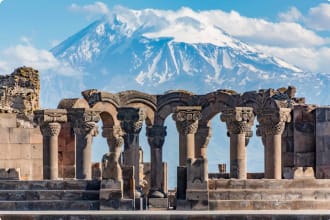
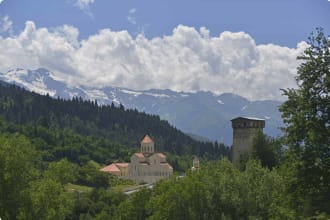
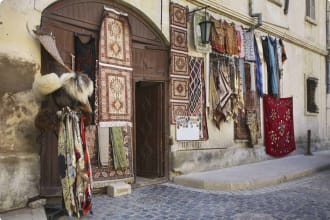
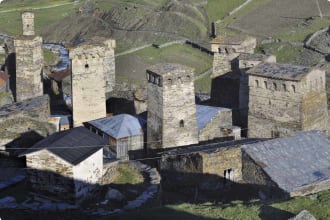
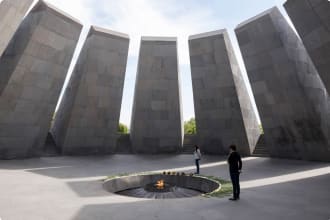
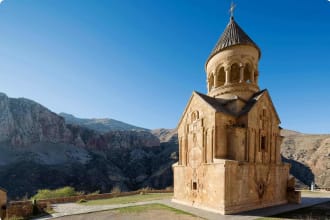
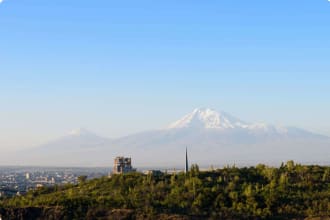
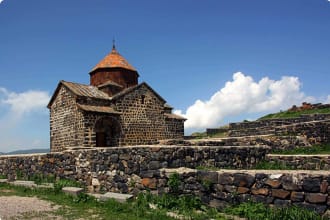
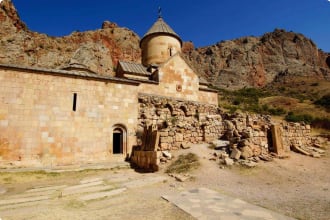
Itinerary
22 days
Day 1: BAKU
Accommodation: 3 nights at Central Park Hotel or similar.
On arrival into the city built on oil that is contemporary Baku, a contrast of so much we will see on this tour, we make our own way to our hotel in Baku, where we enjoy a program orientation and welcome dinner in a local restaurant. (D)
Day 2: Baku
Accommodation: Central Park Hotel or similar.
We begin the first full day our Georgia Armenia Azerbaijan tours with a walking tour of Icheri Shey Har, the old town, with its maze of narrow, cobblestone streets lined with small mosques nestled between terrace cafes and grand turn-of-the-century architecture. A highlight of our afternoon’s explorations will surely be Shirvan Shah’s Palace, a royal palace built in the 15th century and the finest surviving example of Shirvan architecture. In the evening we enjoy a walking touralong Baku sea-side boulevard. Baku Bay is a natural harbour for the capital of Azerbaijan and the main port of Baku. It is located in the wide curve on the southern side of the Absheron Peninsula, sheltered by the Baku archipelago. Our tour guide will explain the history about the Caspian Sea. (B,L,D)
Day 3: Baku
Accommodation: Central Park Hotel or similar.
After breakfast we explore the Absheron Peninsula. It was once the centre of a booming oil industry. However, this former agricultural jewel – north of the capital – is now a desolate landscape of semi-arid vegetation, grim industry and forgotten oil fields. We will visit both Ateshga, the sacred Zoroastrian fire temple built on the site of a natural gas vent and Yanar Dag or Flaming Mountain, one of few remaining natural gas flares in the area. Here we have a traditional tea in a Gala village. We then carry on further down the Caspian coast to Gobustan where over 6,000 Stone and Iron Age petroglyphs have been discovered in the hill caves above town depicting scenes of hunting and dancing rituals, a varied repertoire of animal figures along with thousands of artefacts and tools. (B,L)
Day 4: Baku - Shemakha - Sheki
Accommodation: 1 night at Sheki Sarai Hotel or similar.
After breakfast we drive to Shemakha through small villages nestled among steep mountains and lush valleys dotted with vineyards. We will stop in Shemakha, a city that served for many centuries as the capital and commercial centre of western Azerbaijan before being replaced by Baku in 19th century. Here we visit the famed Yeddi Gumbaz (Seven Tombs), of which only three remain completely intact, the royal tombs of the last Shirvan Khans to rule before the region became part of the Russian Empire. In town, we will stop at Juma Meschid or Grand Mosque whose 10th century foundations are part of the first mosque built in the Caucasus. Passing through stark, arid landscapes dotted with mud volcanoes, we will arrive in Maraza where just off the main road lies Pir Diri Baba Mausoleum built precariously into the side of a cliff. We arrive in Sheki late afternoon. (B,L,D)
Day 5: Sheki - Lagodekhi Border - Telavi
Accommodation: 1 night at Lalie’s Guesthouse or similar.
Early morning we depart Sheki and drive towards the border with Georgia. En route we stop to visit the exquisite Khan’s Palace set in the midst of dilapidated fortress walls and adorned with detailed mosaics and Shebaka windows made from fragments of coloured glass and hand-shaped wooden cross-pieces. We will have the opportunity to visit a Shebaka workshop as well as the local bazaar where we will wander among street peddlers and artists selling everything from local handicrafts and souvenirs to halva, a sweet confection flavoured with cinnamon, fennel or saffron. We continue our journey and cross into Georgia, and make our way to Telavi where we’ll learn about the local bread baking and traditional sweet churchkhela making before having dinner at our guesthouse. (B,L,D)
Day 6: Telavi - Signagi - Tiblisi
Accommodation: 2 nights at the Hotel New Kopala or similar.
A short drive from Telavi takes us back to Gremi and its impressive citadel complex consisting of a 16th century domed church, tower and king’s chamber. We continue towards Signagi where we explore the Royal Town, surrounded by the defensive walls with 23 towers. Each of these towers was named after nearby a nearby village and respective families and served as a refuge in case of danger. The town was mainly inhabited by merchants and artisans. It had many gates through which numerous Silk Road travellers from Asia and Europe passed. We also visit the Signagi Historical and Ethnographical Museum. For lunch we visit a local Georgian wine cellar and then continue our travel to Tiblisi. (B,L,D)
Day 7: Tbilisi
Accommodation: Hotel New Kopala or similar.
Today we explore the narrow streets of the old town of Tiblisi including visits to Metekhi church (12-13th century) – cross cupola church, part of the Royal residential complex; Sulphur bathhouses – 19th century buildings; Sioni Cathedral – the main church of Tbilisi dated to 7th-19th century, located in the Old Town where we also visit Anchiskhati Basilica. After lunch we’ll visit the Simon Janashia Museum of Georgia, formerly known as the State Museum of History of Georgia, one of the main history museums in Tbilisi which displays the country’s principal archaeological findings and the Soviet Occupation Exhibition hall. (B,L)
Day 8: Tiblisi - Mtskheta - Gori - Akhaltsikhe
Accommodation: 2 nights at Gino Rabath or similar.
Today, this small group tour with your tour leader and tour guide drive across the Kartli province, the heart of Georgia. Here we visit the sacred Mtskheta, the ancient capital of eastern Georgia. Georgia’s conversion to Christianity occurred in Mtskheta in 337 AD and it is considered to be one of Georgia’s most important religious centres. We can visit several of its most important historic monuments including the beautiful Jvari church (6th-7th century), perched on a cliff overlooking the city; Svetitskhoveli Cathedral (11th century). In Gori, which is the birth place of Josef Stalin, the tourvisits Uplistsikhe cave town that dates back to 1st millennium BC, this is a 1-1.5hrs walking tour. In late afternoon we arrive in Akhaltsikhe, where we spend 2 nights. (B,L,D)
Day 9: Akhaltsikhe - Varzia - Akhaltsikhe
Accommodation: Hotel Gino Rabati or similar.
After breakfast we explore Samtskhe-Javakheti province and its important architectural monuments. We start by visiting Varzia cave monastery a town,that was transformed into a well-fortified monastery, which had a significant role in the political, cultural, educational and spiritual life of the country. En route there will be a short stop at Khertvisi Fortress (10th century). We then return to Akhaltsikhe to explore the historical centre of the old town and Museum of Akhaltsikhe in Rabati. (B,L,D)
Day 10: Akhaltsikhe - Kutaisi
Accommodation: 1 night at Argo Palace or similar.
Today our tour guide takes the tour out to the picturesque Borjomi Valley and Rikoti Pass to Kutaisi – the capital of ancient Colchis. We’ll have a walk in Borjomi Park and taste the local mineral water. Around noon we will arrive in Kutaisi, one of the biggest cities in Georgia. Nearby we visit the Sataplia grottoes located in one of Georgia’s finest nature reserves. On our return, there will be time to enjoy a walking tour in the old town of Kutaisi. (B,L,D)
Day 11: Kutaisi - Mestia
Accommodation: 3 nights at Hotel Banguriani or similar.
After breakfast we visit Gelati Monastery (a UNESCO world heritage site) before driving to Zugdidi. We then continue our drive to the Enguri Canyon where the Svan ethnic group evolved, cut off from the outside world by the high and inaccessible mountains, their culture preserved almost intact with the ritual of worshipping spirits, the fertility cults, the wolf and the bull, and the poetic muse, Dali, the golden-haired goddess of hunting.
Access to the Svaneti area is hard and conditions are basic, the road to Mestia is rough and long (220km / 4.5hrs drive from Kutaisi to Mestia). The climate in Svaneti is quite stern with cold winters, cool and long springs and cool summers. Mestia and Ushguli are surrounded by snow peaks, glaciers and alpine pastures which make the local climate very special. We are scheduled to arrive in Mestia late afternoon. (B,L,D)
Day 12: Mestia - Ushguli - Mestia
Accommodation: Hotel Banguriani or similar.
Today’s tour takes a 2 hour drive west to the picturesque village of Ushguli, boasting more than 20 ancient Svan Towers it has been listed as a UNESCO world heritage site since 1996. We enjoy a walk in Ushguli and its surroundings. En route we will visit several remote villages and churches. In Ushguli we will be guests of a local family and learn and taste Sulguni, the local cheese. In afternoon we drive back to Mestia. There will be free time this afternoon to continue exploring Mestia at our own pace. (B,L,D)
Day 13: Mestia
Accommodation: Hotel Banguriani or similar.
After breakfast we explore Mestia on a walking tour and visit the Ethnographical and Historical Museum, which was established in 1936 and initially housed a small collection but in 1948 it benefited from an expedition to Svaneti, headed by the famous Georgian art historian Giorgi Chubinashvili that collected illuminated manuscripts, icons and other antiquities from the Svanetian population and from Svaneti churches. The material collected by the expedition forms the core of the museum’s collection. There will be free time this afternoon to further explore Mestia town on your own. (B,L,D)
Day 14: Mestia - Batumi
Accommodation: 2 nights at Hotel Vanilla or similar.
Today we enjoy a guided tour of the town of Batumi, situated on the shore of the Black Sea. En-route our tour guideexplains the history of the regiuon before we visit Dadiani Palace – palace of the lord of Samegrelo region, along with its beautiful park and museum. In the evening we enjoy a short walking tour of Batumi, the 2nd largest city of Georgia with its seaside Boulevard park and the nearby Old Town recently renovated to bring back tourism in the post-Soviet era. (B,L,D)
Day 15: Batumi
Accommodation: Hotel Vanilla or similar.
After breakfast today this small group tour drives south to visit Gonio Fortress, a well preserved Roman fortification just 4km from the border with Turkey. The site is believed to hold the tomb of the Apostle Mathew – one of Christ’s disciples – but has yet to be fully excavated. Later we drive back to Batumi to visit the Botanical Garden, where we take a walk. The gardens overlook the Black Sea and cover an area of 111 hectares, divided into sections displaying flora from different parts of the world. For our lunch we enjoy a traditional cheese-filled bread called “Khachapuri”. There will be free time in the afternoon to continue walking along the boulevard or relax back at the hotel. (B,L)
Day 16: Batumi -Tbilisi
Accommodation: 1 night at Hotel New Kopala or similar.
Your small group tour has an early morning start departing Batumi for the drive to Tbilisi (approx. 7hrs). On the way we stop at the monastic complex of Ubisa, comprising a 9th century St. George’s Monastery founded by St. Gregory of Khandzta, a 4-floor tower (AD 1141), fragments of a 12th century defensive wall and several other buildings and structures. A short drive away in the village Shrosha, we will be hosted by a pottery maker’s family before we continue our travels to the capital Tblisi. (B,L,D)
Day 17: Tiblisi - Sadkhalo - Dilijan
Accommodation: 1 night at Dilijan Resort Hotel or similar
After breakfast, we will be guests in a batik studio where we will meet textile artists and see how they work and later visit the museum of Local Arts and Crafts. After lunch at a local restaurant we will drive to Sadkhalo border and continue our sightseeing in Armenia where we visit the 10-13th centuries Haghpat and Sanahin historical and architectural monuments standing amidst forest-clad hills close to the town of Alaverdi. The monuments including the Haghpat monastery are now a UNESCO world heritage site and excellent examples of medieval Armenian architecture .
We then continue to the town of Dilijan where we spend the night. (B,L,D)
Day 18: Dilijan - Yerevan
Accommodation: 4 nights at Ani Plaza or similar.
Today we visit the nearby Hagharstin Monastery of 13-14th century before departing for Yerevan, which is also another fine example of medieval Armenian architecture. Our first stop is at Lake Sevan – the emerald of Armenia, with a visit to the 9th century Sevan Monastery. If the weather is nice, we can enjoy some time to relax on the sunny and sandy beach of lake Sevan. After lunch we drive south and visit Noratus field of “Khach Kars” – Kross Stoness before heading west to the capital city. On arrival we’ll enjoy a short orientation city tour of Yerevan. (B,L,D)
Day 19: Yerevan
Accommodation: Ani Plaza Hotel or similar.
Today we enjoy a full-day sightseeing tour of Yerevan. Your tour guide leads the city tour which includes visits to the Memorial Complex to the Genocide Victims, Museum of the Medieval Armenian Culture – Matenadaran, and a brandy factory to taste some brandy. (B,L,D)
Day 20: Yerevan - Khor-Virap - Noravanq - Areny Winery - Yerevan
Accommodation: Ani Plaza Hotel or similar.
Today this Caucasus tour heads south to Khor Virap monastery, one of the romantically-sited monasteries in Armeniawith views across vast plain to Turkey and the twin peaks of Mount Ararat. Here, you will find a Noah’s Ark in the snow of Mount Ararat. Humankind was reborn here, with Noah, the world’s first tourist. The theatrical ceremonies and festivals performing in a Noah’s-Ark-shaped stage in the immediate vicinity of the Khor Virap monastery and against the majestic Mount Ararat will take us back to Noah’s ages. We may also enter the hole where Gregory the Illuminator was jailed for 13 years for dissemination of Christianity in Armenia (optional). We also visit the 13th century monastery complex of Noravank set in a marvellous canyon. Lunch will be at a local restaurant. The evening is free to continue exploring the city of Yerevan at your own pace. (B,L)
Day 21: Yerevan - Echimiadzin - Garni - Geghard - Yerevan
Accommodation: Ani Plaza Hotel or similar.
With the tour leader this small group tour heads south again for a tour of Echmiadzin – the holy seat of the Supreme Patriarch-Catholicos of all Armenia. The Cathedral was built in 303 on the site of a pagan temple after the adoption of Christianity as a state religion in 301. We then visit St. Hripsime Church of Echmiadzin (7th century) before driving through the picturesque Avan Canyon, skirting formidable cliffs and passing exotic-looking gorges until the green plateau of the Azat River comes into view. In this natural setting, you will see the pagan Garni architectural complex of the 1st century and feel the spirit of ancient ages. Lunch will be at a photographer’s house. We will also visit the UNESCO world site Heritage listed monastery of Geghard (13th century) which contains a number of churches and tombs, most of them cut into the rock, representing the very peak of medieval Armenian architecture. In the evening we enjoy our farewell dinner at a local restaurant. (B,L,D)
Day 22: Yerevan
After breakfast, we say our farewells and another one of Odyssey Travellers Georgia Armenia Azerbaijan tours draws to a close. (B)
Tour Notes
- Itineraries may change if flight schedules, site availability, and other inclusions have to be amended prior to departure.
- Group size limited to 15.
Includes / Excludes
What’s included in our Tour
- 19 nights of hotel accommodation and 1 night in guesthouse accommodation with shared facilities.
- 21 breakfasts, 20 lunches, and 17 dinners.
- All excursions, entrance fees, and tipping.
- Transport in air-conditioned coaches.
- Local guides throughout.
- Services of Tour Leader for the duration of tour.
What’s not included in our Tour
- International airfares and departure taxes.
- Comprehensive travel insurance.
- Items of a personal nature such as telephone calls and laundry.
- Visa services and fees (if applicable).
Participants must be able to carry their own luggage, climb and descend stairs, be in good health, mobile and able to participate in 3-5 hours of physical activity per day, the equivalent of walking / hiking up to 8 kilometers per day on uneven ground.
Book now
Make it a private tour
Easing your journey
Crossing international borders with restrictions
The list of requirements to travel internationally has changed and will continue to change for several years. Odyssey is here to assist you in managing your way through these requirements:
For more information see our Crossing international borders with restrictions page.
Book With Confidence
If less than 30 days before your tour starts you are unable to travel as a result of Government travel restrictions, Odyssey Traveller will assist you with a date change, provide you with a credit or process a refund for your booking less any non-recoverable costs.
See Terms and conditions for details.
Peace of Mind Travel
The safety of our travellers, tour leader, local guide and support staff has always been our top priority and with the new guidelines for public health and safety for keeping safe for destinations around the world, we’ve developed our plan to give you peace of mind when travelling with us.
See Peace of Mind Travel for details.
Reviews
A great tour to an interesting part of the world Ros & Tony S. Oct '18
Exceptional value for money and interesting destinations well covered by guides! Kerry and Lea D. Oct '18
Travelling to Azerbaijan, Georgia and Armenia is quite different to travelling in other parts of Europe or the Middle East. Although they all have ancient histories, were colonised by many different peoples and were former Soviet states, they have their own food, culture and traditions. Jenni S. Oct'18
Anybody contemplating a visit to these countries shouldn't put it off. They weren't overcrowded with tourists but I believe that will change very soon. This was my first trip with Odyssey but I have already booked my next one - testament to how good I found them to be. Shirley M. Oct '18
Reading List Download PDF
The Caucasus: An Introduction
Thomas de Waal
In this fascinating book, noted journalist Thomas de Waal--author of the highly acclaimed Black Garden--makes the case that while the Caucasus is often treated as a sub-plot in the history of Russia, or as a mere gateway to Asia, the five-day war in Georgia, which flared into a major international crisis in 2008, proves that this is still a combustible region, whose inner dynamics and history deserve a much more complex appreciation from the wider world.
In The Caucasus, de Waal provides this richer, deeper, and much-needed appreciation, one that reveals that the South Caucasus--Armenia, Azerbaijan, and Georgia, and their many smaller regions, enclaves, and breakaway entities--is a fascinating and distinct world unto itself. Providing both historical background and an insightful analysis of the period after 1991, de Waal sheds light on how the region has been scarred by the tumultuous scramble for independence and the three major conflicts that broke out with the end of the Soviet Union--Nagorny Karabakh, Abkhazia, and South Ossetia. The book examines the region as a major energy producer and exporter; offers a compelling account of the Rose Revolution in Georgia, the rise of Mikheil Saakashvili, and the August 2008 war; and considers the failure of the South Caucasus, thus far, to become a single viable region. In addition, the book features a dozen or so "boxes" which provide brief snapshots of such fascinating side topics as the Kurds, Turkish-Armenian rapprochement, the promotion of the region as the "Soviet Florida," and the most famous of all Georgians, Stalin.
The Caucasus delivers a vibrantly written and timely account of this turbulent region, one that will prove indispensable for all concerned with world politics. It is, as well, a stimulating read for armchair travelers and for anyone curious about far-flung corners of the world.
The Ghost of Freedom: A History of the Caucasus
Charles King
The Caucasus mountains rise at the intersection of Europe, Russia, and the Middle East. A land of astonishing natural beauty and a dizzying array of ancient cultures, the Caucasus for most of the twentieth century lay inside the Soviet Union, before movements of national liberation created newly independent countries and sparked the devastating war in Chechnya.
Combining riveting storytelling with insightful analysis, The Ghost of Freedom is the first general history of the modern Caucasus, stretching from the beginning of Russian imperial expansion up to the rise of new countries after the Soviet Union's collapse. In evocative and accessible prose, Charles King reveals how tsars, highlanders, revolutionaries, and adventurers have contributed to the fascinating history of this borderland, providing an indispensable guide to the complicated histories, politics, and cultures of this intriguing frontier. Based on new research in multiple languages, the book shows how the struggle for freedom in the mountains, hills, and plains of the Caucasus has been a perennial theme over the last two hundred years--a struggle which has led to liberation as well as to new forms of captivity. The book sheds valuable light on the origins of modern disputes, including the ongoing war in Chechnya, conflicts in Georgia and Azerbaijan, and debates over oil from the Caspian Sea and its impact on world markets.
Ranging from the salons of Russian writers to the circus sideshows of America, from the offices of European diplomats to the villages of Muslim mountaineers, The Ghost of Freedom paints a rich portrait of one of the world's most turbulent and least understood regions.
The Caucasus: A History
James Forsyth
For the first time, this major new survey of the Caucasus traces a unified narrative history of this complex and turbulent region at the borderlands of Europe, Asia and the Middle East, from prehistory to the present. For thousands of years the Caucasus has formed the intersection of routes of migration, invasion, trade and culture, and a geographical bridge between Europe and Asia, subject to recurring imperial invasion. Drawing on sources in English, Russian, Persian and Arabic, amongst others, this authoritative study centres on the region's many indigenous peoples, including Abkhazians, Armenians, Azerbaijanis, Chechens and Circassians, and their relations with outsiders who still play an important part in the life of the region today. The book presents a critical view of the historical role of Russian imperialism in events in the Caucasian countries, and the violent struggle of some of these peoples in their efforts to establish a precarious independence.
Legends of the Caucasus
David Hunt (ed.)
The Caucasus has an extremely rich folk literature, almost unknown among English speakers, which includes myths, legends, magical tales, anecdotes, and proverbs.
The one hundred and one legends included in this book reflect the cultures of fourteen different ethnic groups—their dynamism and the matters that concerned them: survival against external dangers, the risk of starvation, and the persistence of the family or clan as a coordinated group. Descended from an oral tradition, much of their knowledge was retained in memories and passed down the generations. Yet, with the introduction of the alphabet, the way of life they portray is rapidly becoming extinct.
The translation is derived from the manuscripts of Russian collectors working out of the Russian Empire in the late nineteenth century and from the Soviet Union in the mid-twentieth century. The text is a mixture of prose and verse, reflecting how the legends would have been performed by storytellers within the culture.
This volume includes a map, bibliography, appendix, glossary, keyword and theme analysis, and references.
Caucasus: A Journey to the Land between Christianity and Islam
Nicholas Griffin
A rugged land between the Black and Caspian seas, the Caucasus is a battle ground for a fascinating and formidable clash of cultures: Russia on one side, the predominantly Muslim mountains on the other. In Caucasus, award-winning author Nicholas Griffin recounts his journey to this war torn region to explore the roots of today's conflict, centering his travelogue on Imam Shamil, the great nineteenth century Muslim warrior who commanded a quarter-century resistance against invading Russian forces.
Delving deep into the Caucasus, Griffin transcends the headlines trumpeting Chechen insurgency to give the land and its conflicts dimension: evoking the weather, terrain, and geography alongside national traditions, religious affiliations, and personal legends as barriers to peaceful co-existence. In focusing his tale on Shamil while retracing his steps, Griffin compellingly demonstrates the way history repeats itself.
Let Our Fame Be Great: Journeys Among the Defiant People of the Caucasus
Oliver Bullough
Part travelogue, part history, Let Our Fame Be Great tells the stories of the forgotten peoples of the Caucasus region, an incredible cultural crossroads where Eastern Europe, Central Asia, Turkey and the Middle East meet. The area was once the home of the Golden Fleece and Prometheus’ place of exile, and later inspired Pushkin and Lermontov, but its rich history has been overshadowed by decades of guerrilla warfare. Now, it is better known to us for the struggle in Chechnya and the 2008 war between Georgia and Russia. Traveling through history and throughout this tumultuous region, journalist and Russia expert Oliver Bullough details the major events—from nineteenth-century Tsarist expansionism to the modern day struggles in Chechnya and South Ossetia—that have shaped this fascinating land and its people: the Chechens, Nogais, Circassians, mountain Turks, and Ingush who have been consistently besieged—and woefully overlooked—for nearly two hundred years.
Three Apples Fell From Heaven
Micheline Aharonian Marcom
A New York Times Notable Book that imagines the lives of several sufferers of the twentieth century’s first genocide. Anaguil, an Armenian girl taken in by Turkish neighbors after the death of her parents who now views the remains of her world through a Muslim veil; Sargis, a poet hidden away in his mother’s attic, dressed in women’s clothing, and steadily going mad; Lucine, a servant and lover of the American consul; Maritsa, a rage-filled Muslim wife who becomes a whore; and Dickran, an infant left behind under a tree on the long exodus from an Armenian village, who reaches with tiny hands to touch the stars and dies with his name unrecorded.
Georgia: In the Mountains of Poetry
Peter Nasmyth
Georgia has been called the world’s most beautiful country, yet only little is known about it beyond its borders. This topical and vital book by the “ideal chronicler” (Literary Review) Peter Nasmyth is the perfect and much-celebrated introduction to its remarkable people, landscape, and culture.
Over its 3,000-year-old history, Georgia has been ruled by everyone from the Greeks to the Ottomans, became a coveted part of the Russian Empire for a hundred years, and was incorporated into the Soviet Union in 1921. In twenty-five years, Georgia has undergone a dramatic socio-economical and political transformation, and although its political situation remains precarious, Georgia’s strong sense of nationhood has reinvigorated the country.
Vivid and comprehensive, Nasmyth’s Georgia: In the Mountains of Poetry is a unique eyewitness account of Georgia’s rebirth and creates an unforgettable portrait of its remarkable landscape, history, people and culture. Based on personal experience and offering fascinating insights into the life of ordinary and high profile Georgians, it is essential reading for anyone who does not yet know, or wants to know more, of this astonishing place.

